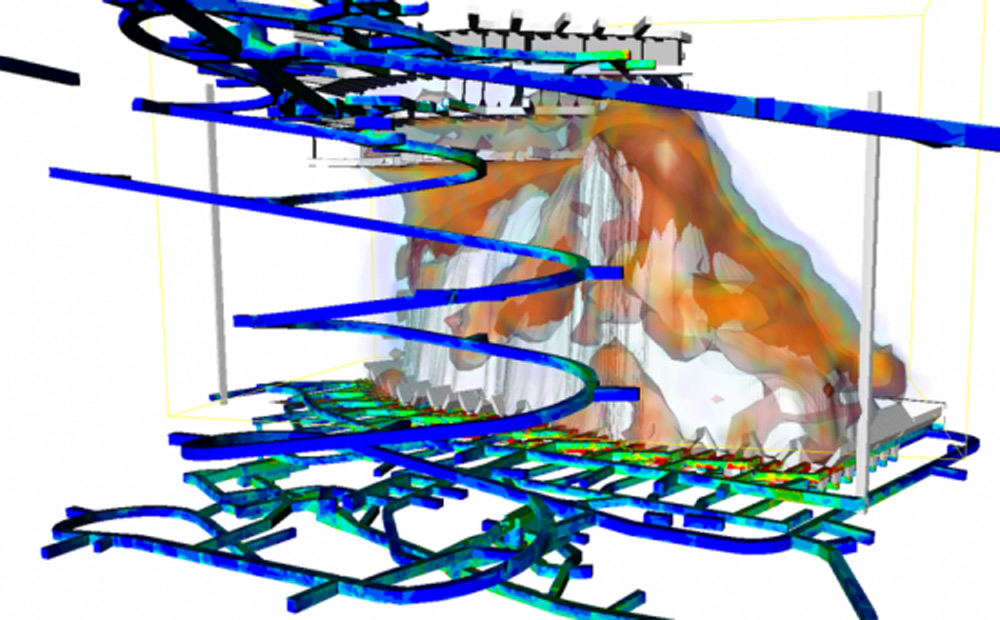Caving Initiation, Propagation and Subsidence
To better estimate the likely performance of caves, a tool that properly accounted for the physical coupling of the caved material to the un-caved rock mass and the draw schedule, driven by the known physics of both parts of the problem was needed. No such tool was available.
After analysing a number of alternatives, a coupled Discontinuum Finite Element (DFE) – Cellular Automata (LGCA, or Newtonian CA) scheme was developed, making use of our existing DFE capability and our partners’ cave simulation tools.


